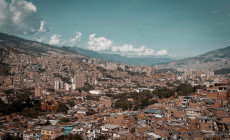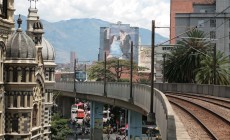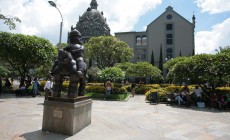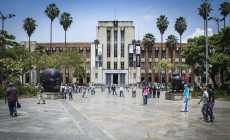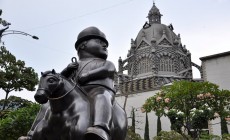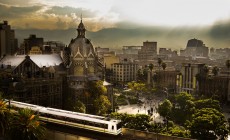-
Latin America
Latin America
- Countries (hidden space)
- Galapagos & Ecuador
- Guatemala
- Mexico
- Panama
- Peru
- Popular Attractions
- Machu Picchu
- Inca Trail
- Easter Island
- Galapagos Islands
- Patagonia
- Rio de Janeiro
- Iguazu Falls
-
Africa
Africa
- Spacer Africa
- South Africa
- Zimbabwe
- Popular Attractions
- Cape Town
- Okavango Delta
- Sossusvlei Dunes
- Victoria Falls
- The Kruger
- The Garden Route
- Masai Mara
-
Asia & Middle East
Asia & Middle East
- Asia
- Borneo (Malaysia)
- Cambodia
- India
- Japan
- Middle East
- Jordan
- Spacer Asia
- Laos
- Sri Lanka
- Uzbekistan
- Vietnam
- Popular Attractions
- Taj Mahal
- Lion Rock (Sigiriya)
- Angkor Wat
- Ha Long Bay
- Kyoto
- Petra
-
Destinations
- Latin America
- Argentina
- Bolivia
- Brazil
- Chile
- Colombia
- Costa Rica
- Galapagos & Ecuador
- Guatemala
- Mexico
- Panama
- Peru
- Asia
- Borneo (Malaysia)
- Cambodia
- India
- Japan
- Laos
- Sri Lanka
- Uzbekistan
- Vietnam
- Middle East
- Jordan
- Southern & East Africa
- Botswana
- Kenya
- Namibia
- South Africa
- Zimbabwe
- Contact Us
-
About
About
Llama Travel provides high quality holidays at the lowest possible prices.
99% recommend us Lower prices - guaranteed Financially protected by ATOL
Medellín is Colombia’s second largest city and one of its proudest success stories. Perched in the Andes mountain range, surrounded by peaks and high altitude rural farming areas, the city itself has become known for its innovative social development programmes.
Medellín Location
“Even the drive from the airport into the city leaves a stamp in my memory; the winding roads rolling down into the valley where the city is spread out.” – Otto, Llama Travel
The second largest city in Colombia, Medellín is located in the north-western part of the country, in the Antioquia province. It is known as the City of Eternal Spring, thanks to its pleasant climate in an Andean valley.
Medellín History
Spanish explorers reached what is now known as the Aburrá Valley in central Colombia in 1541, but the settlement of Medellín was founded almost two centuries later, on 2 March 1616, by the conquistador Don Francisco Herrera Campuzano, beside the Aburrá River. Land was divided by early settlers, believed to be Spanish Jews fleeing the inquisition, into small plots for farming. A culture of self-reliance developed, and the people of Medellín and the surrounding region of Antioquia became known for their hard-working and independent attitude.
Medellín remained a minor town until the early twentieth century, when a new railway improved connectivity and a boom in the coffee industry allowed the town to emerge into the world economy. In the 1980s, the city’s story took a monumental turn when the drug lord Pablo Escobar gained control of Medellín, and reigned for over a decade. During this time, life in Medellín was brutal and dangerous, and when Escobar was killed during a raid on 2 December 1993, the city had already been deeply scarred.
Medellín Attractions
Putting their past behind them, huge efforts have transformed Medellín into a safe, modern, pioneering city. Local social regeneration projects were recognised on an international stage when the city was named the world’s most innovative city in a competition run by Urban Land Institute. Citizens continue to strive to improve living conditions and turn away from the past, placing art installations in previously notorious sites, and modernising transport services between the outer, poorer, suburbs and the centre.
Modern Medellín
Showcasing the city’s transformation and reinvention project, Medellín’s downtown area is full of restaurants, bars and museums. El Poblado is one of the most prestigious areas, along with other upper class residential suburbs such as Laureles and Belen.
Museums
A former library, the Museum of Antioquia in the city centre, is an art museum housing works by Colombian artists, including the much-loved Fernando Botero, whose sculptures of people and animals depicted in exaggerated form are dotted around the square facing the museum. Botero’s paintings and drawings also give an interesting take on Medellín’s turbulent past. The Museo Casa de la Memoria, located to the east of downtown, is a good choice for those interested in learning more about the city’s history. Next to the University of Antioquia, in an attractive part of the city, there are several museums and cultural centres, including the interactive science museum Parque Explora, a planetarium and pretty botanical gardens.
Comuna 13
Public escalators now run through what were once the most inaccessible suburbs, positioned on the steep sides of the valley. The community of Comuna 13, renowned for its street art covered walls and colourful escalators, gives a great insight into the vibrant daily life of the Paisas (this is the name given to the people from northwest Colombia, including Medellín).
Cable Car
One of the best ways to witness Comuna 13 is to take the Metro Cable, a cable car providing an aerial view of the innovative project and a city panorama. For wonderful views of the city, be sure to take the Metrocable up to Arví Park for some beautiful walking trails, bicycles for hire and picnic spots. The contrast between urban life and the heavily forested landscape is striking.
Guatapé
The colourful town of Guatapé is two hours from the city, and a popular daytrip. La Piedra, Spanish for ‘the stone’, is a huge monolithic formation located close to the community of Guatapé. The summit of La Piedra is reached by climbing 740 steps, with tremendous views from the top, and a cafe selling well-deserved refreshments. The surrounding area is very scenic, with rolling hills and reservoirs, whilst the pretty town is a maze of buildings decorated with colourful tiles.
Santa Elena
The most important festival celebrated in Medellín is the annual Flower Festival, held in August. During the rest of the year, the best way to capture the spirit of the festival is by visiting the small town of Santa Elena, approximately 10 miles from the city, where farmers grow an abundance of flowers in every shade, and make ornate arrangements called silletas that are proudly displayed during festival parades. Silletero’s workshops can be visited year-round, where beautiful arrangements are artfully constructed by locals.
Find out more about Medellín by speaking to someone who’s been there. Send an email to This email address is being protected from spambots. You need JavaScript enabled to view it..

